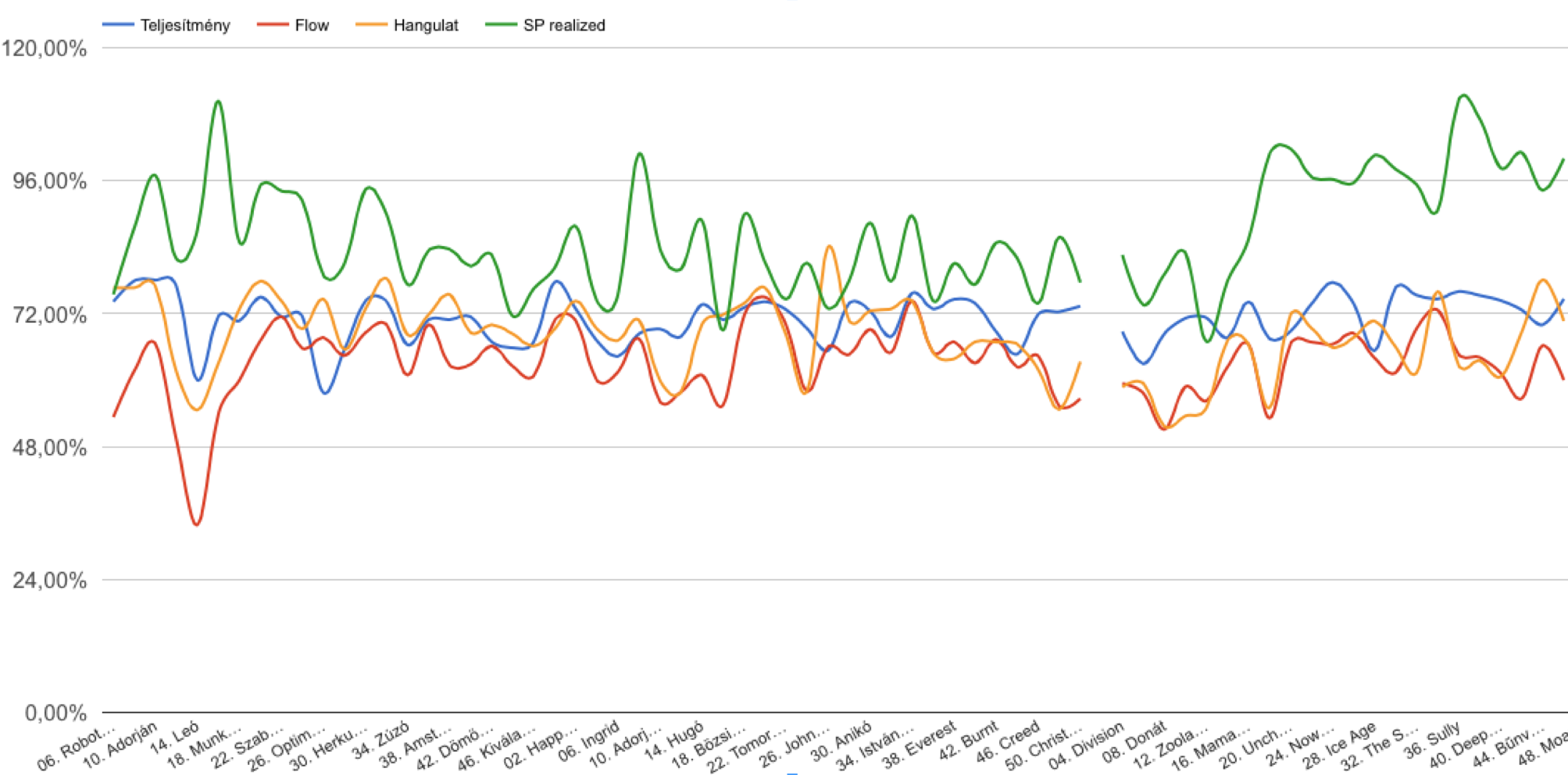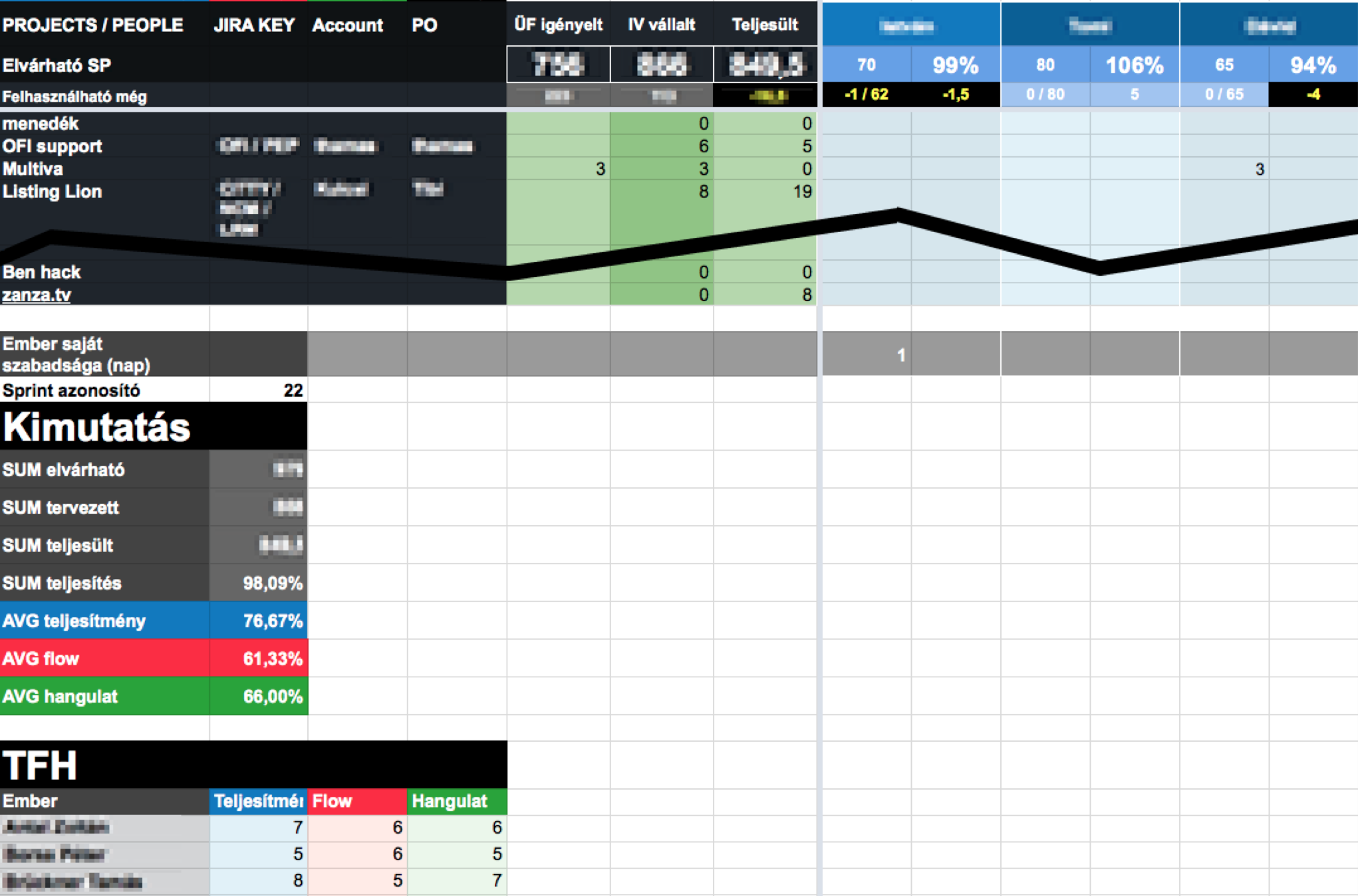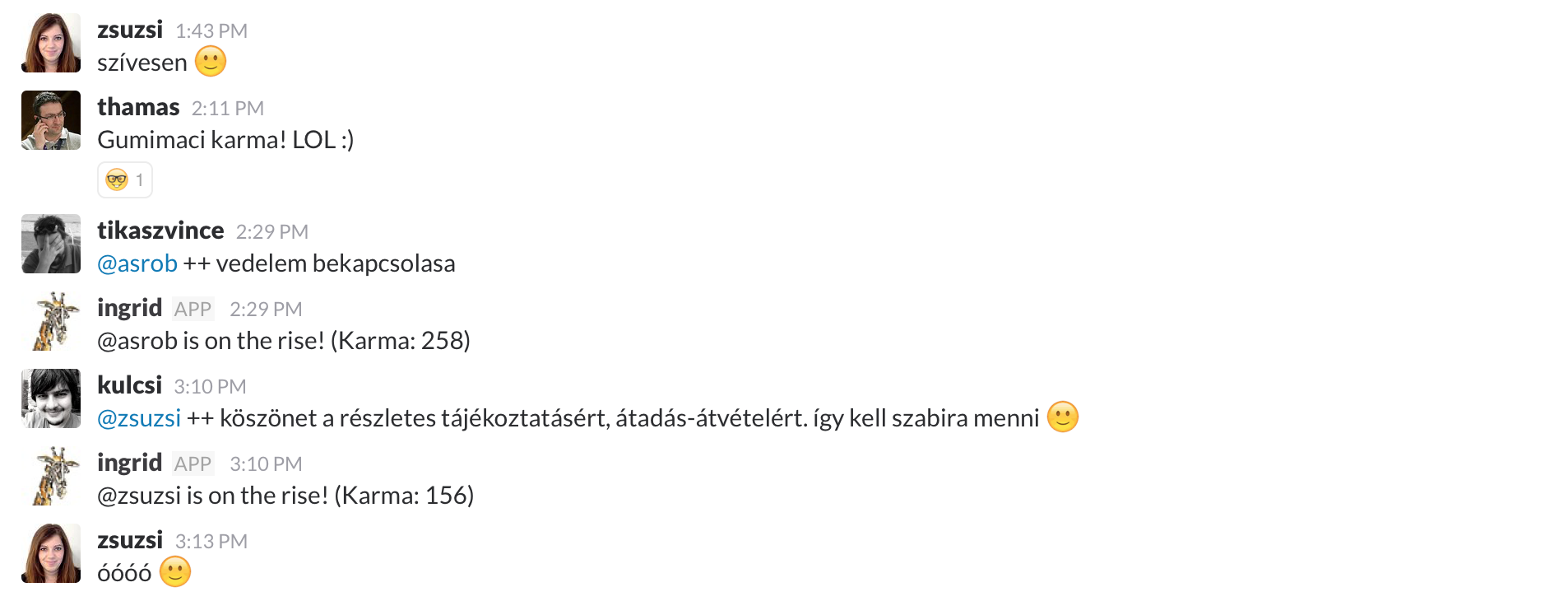We’ve measured company well-being for three years. Biweekly, when we stop for a day, we all answer three questions: How was my performance? How deep did I get in flow? How did I feel?
Integral VisionWe've measured company well-being for three years. Biweekly, when we stop for a day, we all answer three questions: How was my performance? How deep did I get in flow? How did I feel?
We write the values in a shared sheet,

in which we follow the changes on a permanently updated graph. This is our well-being chart:

Besides the three subjective dimensions, there is also an objective one visible, which shows the actual performance. Mood and flow follow each other relatively close, the other two dimensions – performance noticed and measured – move on separate ways.
Martin Seligman is an important character of positive psychology. He was the one who started using the term well-being instead of happiness, which he reduced to five elements: positive emotion, engagement, relationships, meaning, achievement.
If we would like to build a good working environment, we need indeed to keep these dimensions in mind. It is disputable how stable results can be reached. The situation is that making a pessimistic person turn optimistic, is pretty much as hard as to make a fat person slim. Both are possible, but sustainability is a challenge. In the long term, most people gain back the weight, and our hilarity also returns to an earlier stage. Even the best practice becomes obsolete in a few months. I feel important that the team, from time to time, reflects on what is working well and where changes are needed. The actual stress brought up usually shows where it is worth experimenting with different methods.
Hereinafter I will introduce some practices we prefer at Integral Vision and affect some dimension of well-being in a positive way.
1. Meaning – Project starting workshop
We've had this practice for a while, that at the beginning of each project, we draw together our motivation map. These sessions are regularly moderated by Gergő, and all colleagues are present who are In the project. We name those persons who are interested in the success of the project, including the client and the executing team. We discuss what may motivate the different persons and how they will be satisfied with the project. Thereafter we all write on the board what we would ask from the other team members in order to receive our needs, and we also make an offer on how we can contribute to the project personally.
Mainly we have a project closing session after go-live, where we have a look at the motivation map again in the light of the objective numbers and upon the intense experience.
2. Achievement – Personal Commitment
We measure performance with complexity points. Each person defines his or her own commitment for the next quarter. We have a shared excel sheet where everyone writes points for the different projects. At the end of the sprint, Ingrid, our company bot transfers the realized points from our issue tracking system to the common excel. This way, it becomes visible how many percents each person achieved in the actual sprint. The next screen shows how this looks like.

3. Engagement – Private hours
To be able to get in the flow, you need uninterrupted hours and circumstances when no one talks to you.
Zoli mentioned last time that he couldn't proceed with his tasks like planned, because of getting interrupted. Here comes an impulse; there comes a question – it is difficult to develop this way. This is a recurring problem; however, we often deal with it and try to make the balance between teamwork and lonely intense effort.
One of our practices to protect private hours is that between 1 pm and 3 pm we do not talk or disturb each other. If someone needs to get in touch with a colleague during this time-space, they use direct message on Slack, which the other person reads when it is suitable. The other rule is that a person wearing earphones is protected. It is his or her responsibility to turn off Slack, in order not to get disturbed, and decide when to reply.
4. Relationships – Company lunch and retrospective
We have lunch together on every demo day. For this, it is crucial to have a big enough kitchen where everyone can sit down and eat the food ordered together in the morning. I believe this is one of the most important criteria for configuring a good workspace. The kitchen is the main spot for establishing relationships. We also celebrate birthdays on the demo day, and the consumed sugar bomb can make the afternoon retro session even better.
5. Positive emotions - #thanks channel
The #thanks channel is one of our most active chat channels. It was Tamas' idea to start this. It brings pleasure to express our gratitude for someone's help in front of others. Everyone seems to agree on this.

Share with your friends!